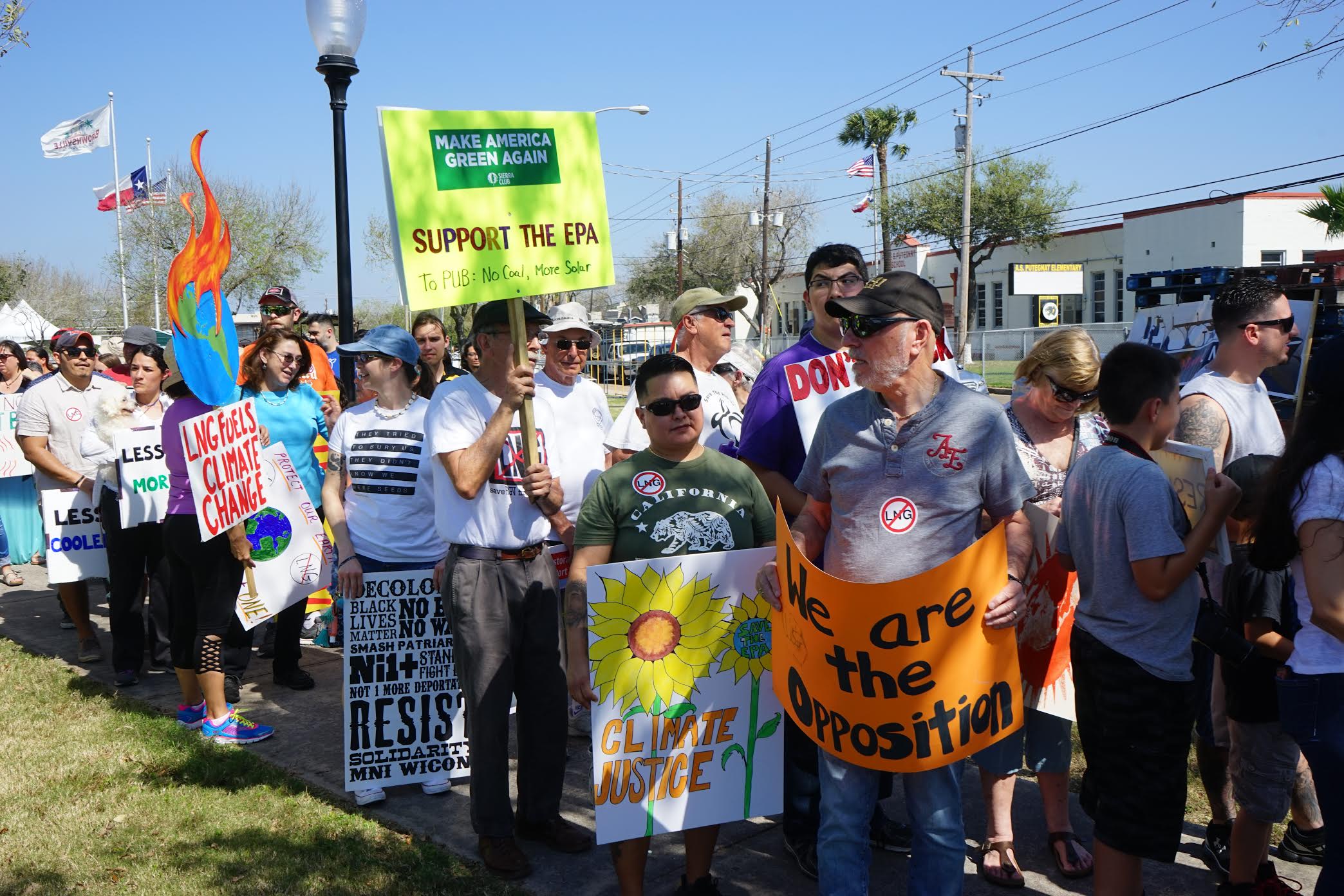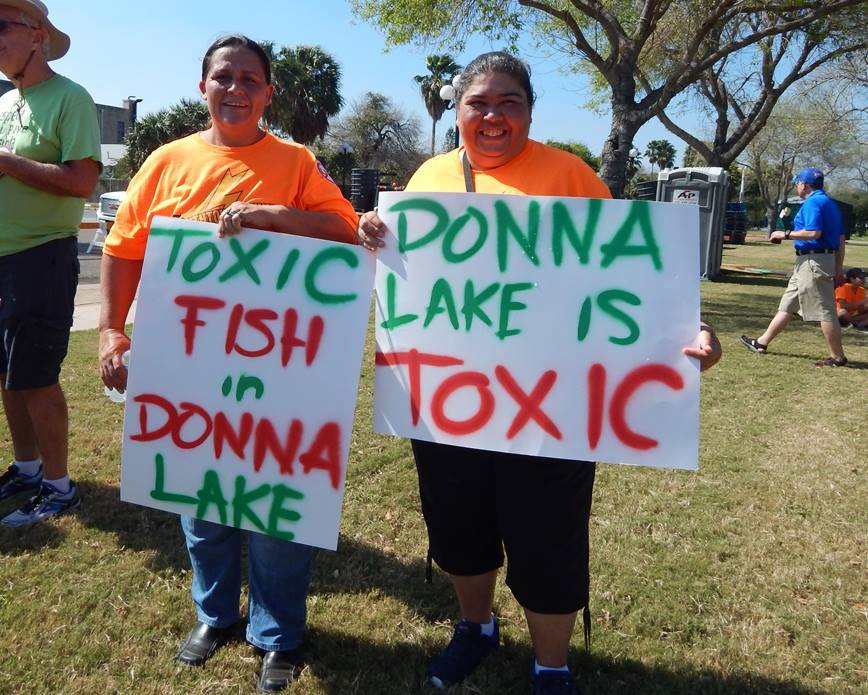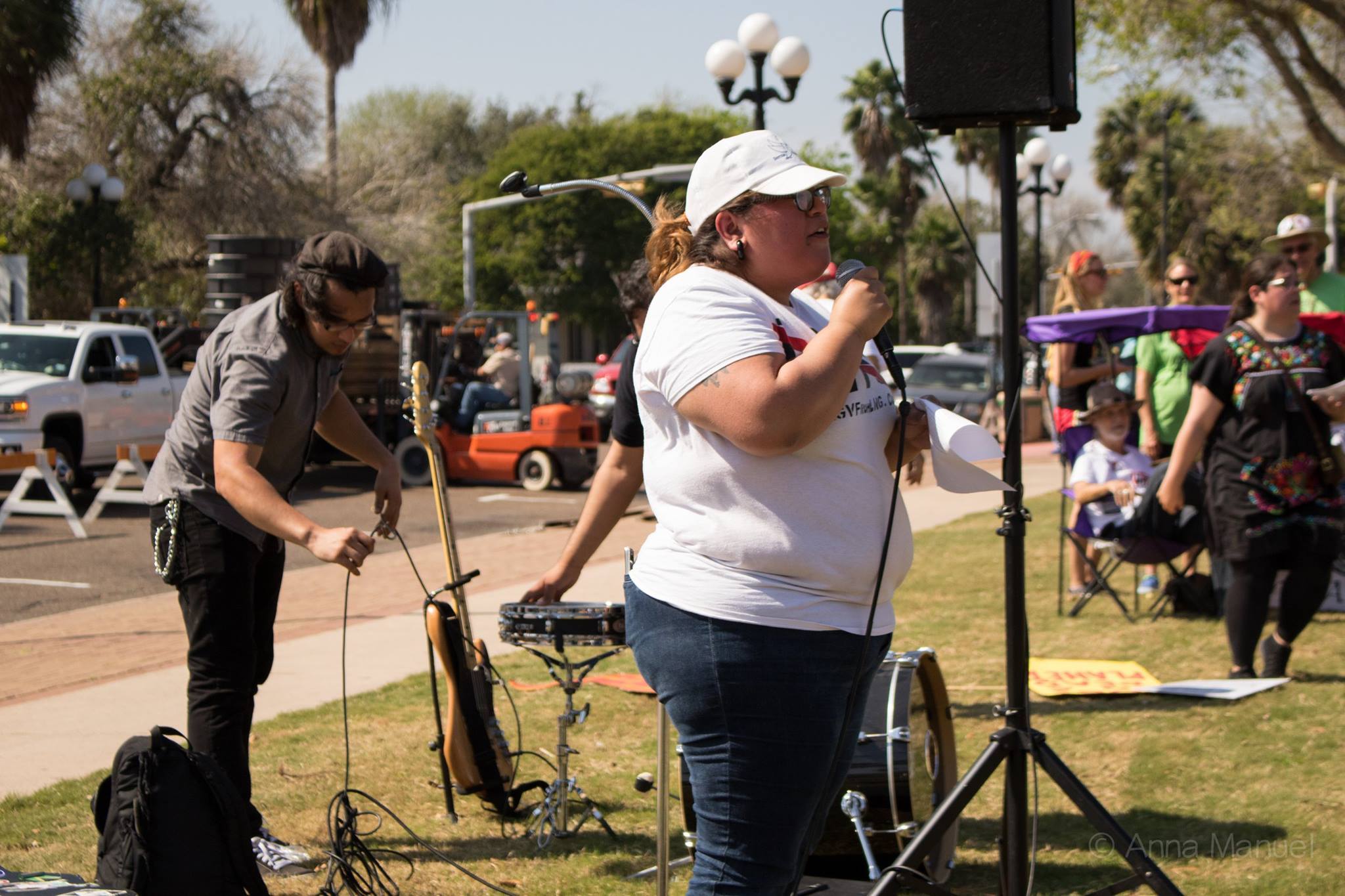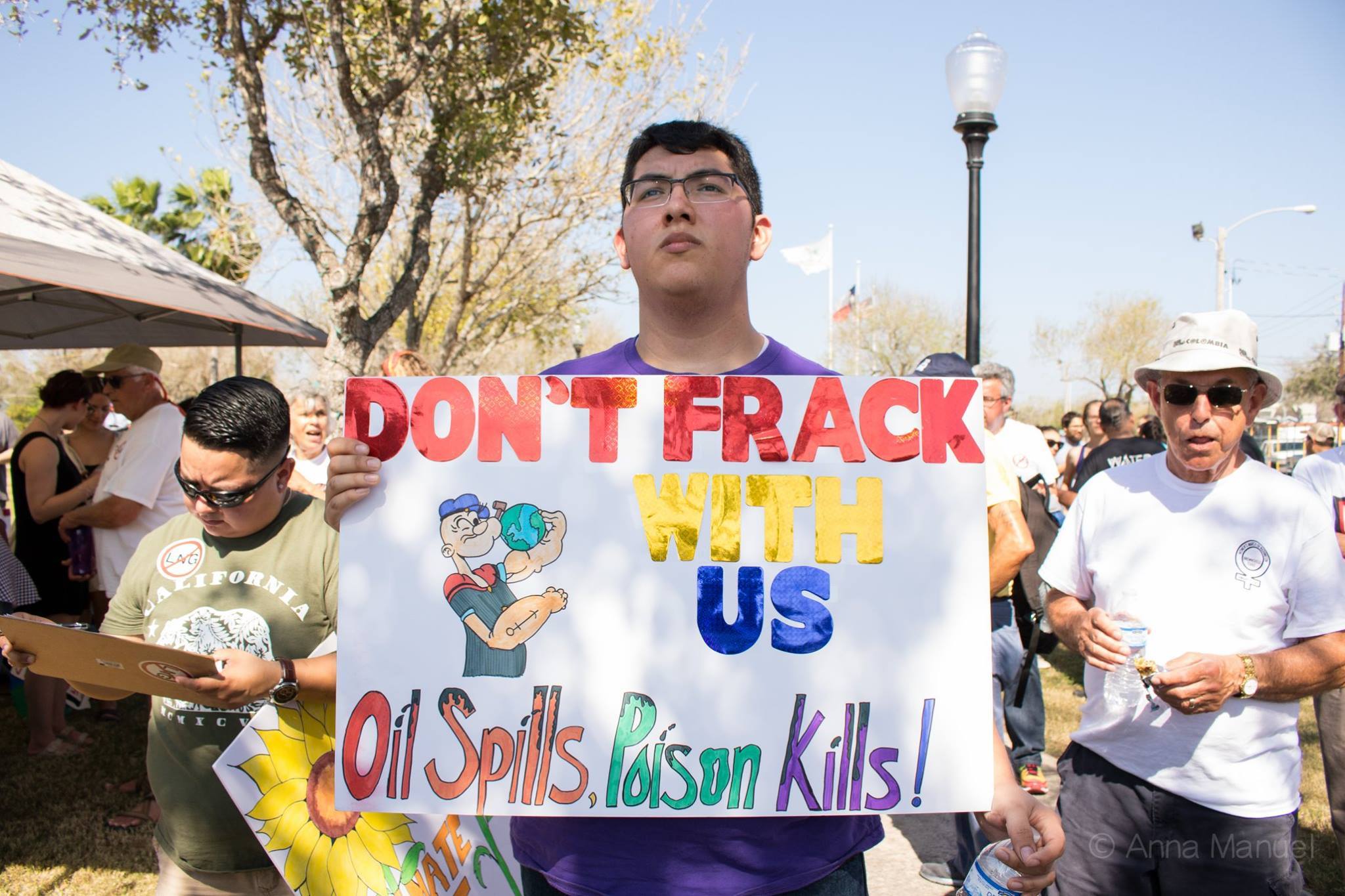By Rebekah Hinojosa
On February 18, Rio Grande Valley residents marched from Brownsville’s Washington Park, past the U.S./Mexico border wall and down the old Historic downtown area. They marched to demand climate and environmental justice for the valley and especially for our latinx and indigenous communities. The Carrizo Comecrudo Tribe of Texas, one of the original peoples from the region, led the way. Nearly 200 people held signs and banners that ranges from “LNG = environmental racism” and “Defienda Nuestra Madre” to a giant mosquito on a stick to raise awareness of Zika virus -- a known climate change disease plaguing our low-income communities. Together, they all chanted “show me what community looks like, show me what the Valley looks like” and “climate justice now!”
A Community Facing Many Injustices
The Rio Grande Valley faces two front lines of hostilities and division: the border between the U.S. and Mexico and the Port of Brownsville along the Gulf of Mexico. The border forcibly separates families while oil and gas industry drilling in the Gulf of Mexico pollutes the waters.
Our home is also a climate change frontline community. This means, within the next one hundred years or so, much of the area will suffer rising sea levels, and projections show more dangerous heatwaves by the year 2050. In the coming years, we can expect half the year to have high temperatures over 105͒ F which, considering the fact that people in the valley have died every summer from heat exhaustion, is particularly alarming. With Trump's plan to build a bigger more oppressive wall and the pending federal approval to bulldoze 3,000 acres of the coastline for three liquefied natural gas (LNG) companies which will be transporting fracked gas, we only face an increase in these troubles.

Regardless of what is to come, the fact is that the impacts of climate change and environmental injustice are already present in our communities. These include: a toxic reservoir filled with chemically-poisoned fish that the Donna, TX community has demanded the EPA cleanup since the 90s, dangerous flooding into colonia homes that often prevents school buses from picking up children, an open sewer lagoon system affecting the South Tower Community with bad odor, and dozens of zika virus cases in a region of Texas with historically low access to healthcare. With an intentionally toxic presidential administration in office, we need a community united now more than ever. The message of the climate march was clear: to change everything, we need everyone. And that means we need community justice organizations working with one another for the common goal of equality for all people with the environment of our borderlands.

Building an Environmental Movement That Supports Equality For All
“We need to start building our community organizations here in Brownsville and across the Rio Grande Valley to help us build the future we want for our families,” said Josette Cruz, a Brownsville resident and organizer with the Save RGV from LNG group.

Josette Cruz, Brownsville resident and member of Save RGV from LNG
"Participating in the march was a step towards building stronger relations with the Valley environmental community and to show support and advocate for our region as a whole even though the issues affecting us are varied," commented Josue Ramirez, Co-Director for Texas Low-Income Housing Project.

Joining the Save RGV from LNG group and the Lower Rio Grande Valley Sierra Club (Facebook) were many other organizations working towards environmental and social justice issues, like A Resource in Serving Equality (ARISE), La Union Del Pueblo Entero (LUPE), the youth group Jóvenes del Valle en Acción, and Texas Low-Income Housing Information Service (Texas Housers).